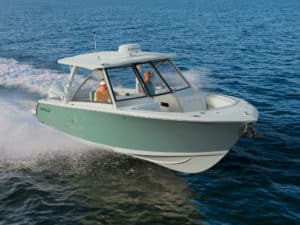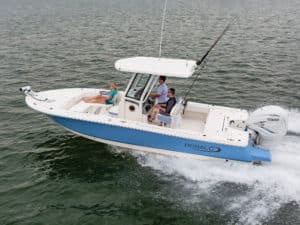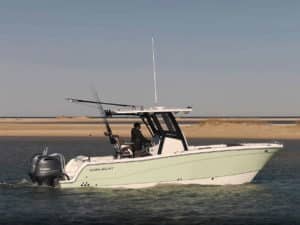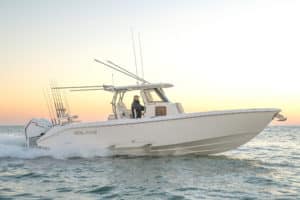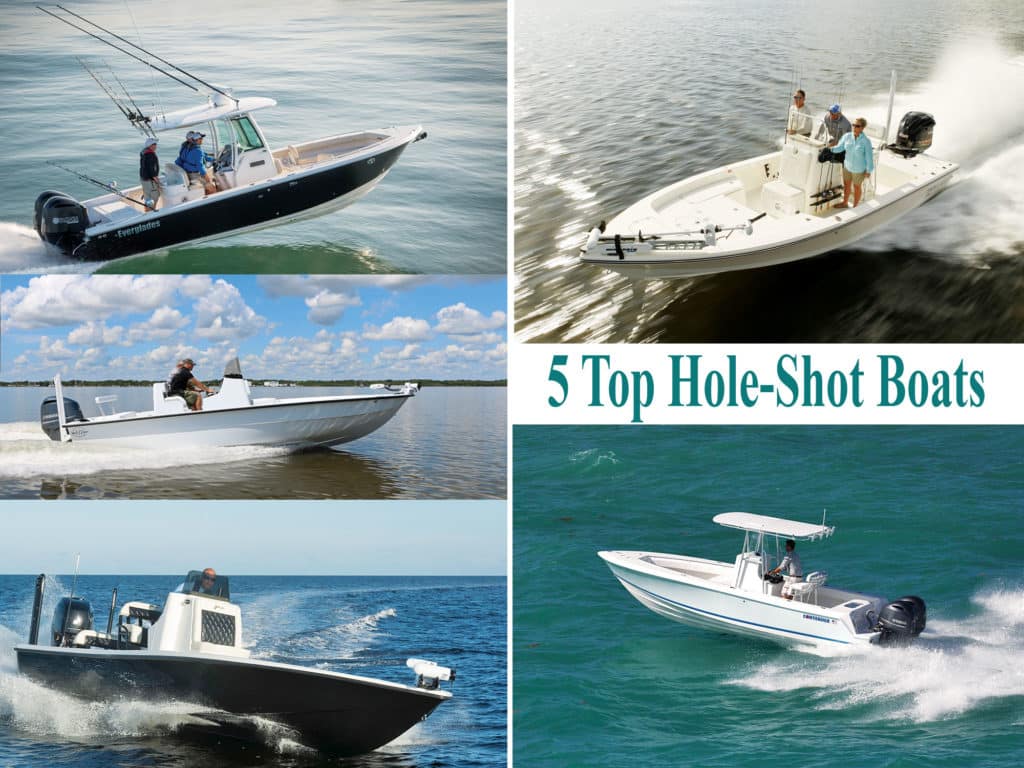
For the sake of sea grasses and benthic organisms, as well as the desires of competitive anglers, boatbuilders consider the hole shot when designing many of their new center console boats. Accelerating quickly to plane matters in a wide variety of applications when fishing shallow water, of course, but also offshore.
Out of curiosity, we decided to unscientifically scour performance numbers for many popular boatbuilders to identify their quickest hulls. We soon saw that finding boat models capable of accelerating to 30 mph in 6 seconds or less proved fairly difficult.
Here are five that did just that — in testing (trim tabs up, engines trimmed in) by outboard manufacturers and in archived tests by Sport Fishing editors — whose builders agreed to answer our questions. Most are bay boats or hybrids, though Contender’s tournament-edition 25-foot center console proved to be the top sprinter in that company’s lineup.
To find out how they built these speedsters, I asked each manufacturer to explain the design. (Boats are listed alphabetically.)
Contender 25 T
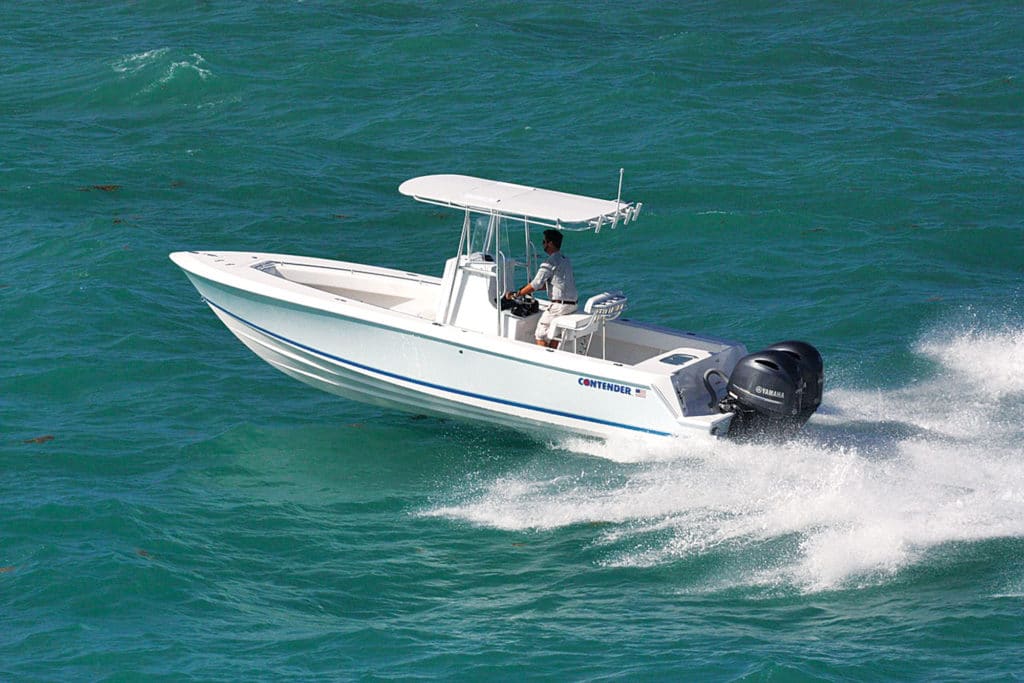
Contender’s tournament-edition 25-footer tops 30 mph in a blistering 5.2 seconds when powered by twin Yamaha F200s. Its 24½-degree deadrise allows the boat to cut through water with less drag than a flatter-bottom boat, says Nick Miller, Contender spokesman. “This hull also features intense reverse chines that act as lifting strakes to get the boat on plane incredibly fast.”
Strong but lightweight materials, the center of gravity, the outboard height and the hull-bottom design must all combine to create the proper setup for acceleration. With 32 years as a fishing-tournament competitor, Contender founder Joe Neber has seen what works, Miller says.
“Years ago, most boat companies, captains and owners would change props to get on plane quicker. Or if they wanted to cruise at a faster speed, they’d use a different pitch prop. Therefore the trade-off was tremendous,” he says. “But with our years of building tournament-winning hulls, we constantly honed and perfected them so the consumer can purchase a water-ready Contender and doesn’t have to be concerned with adjusting anything or giving up anything in exchange for the quick hole shot along with some better overall performance.”
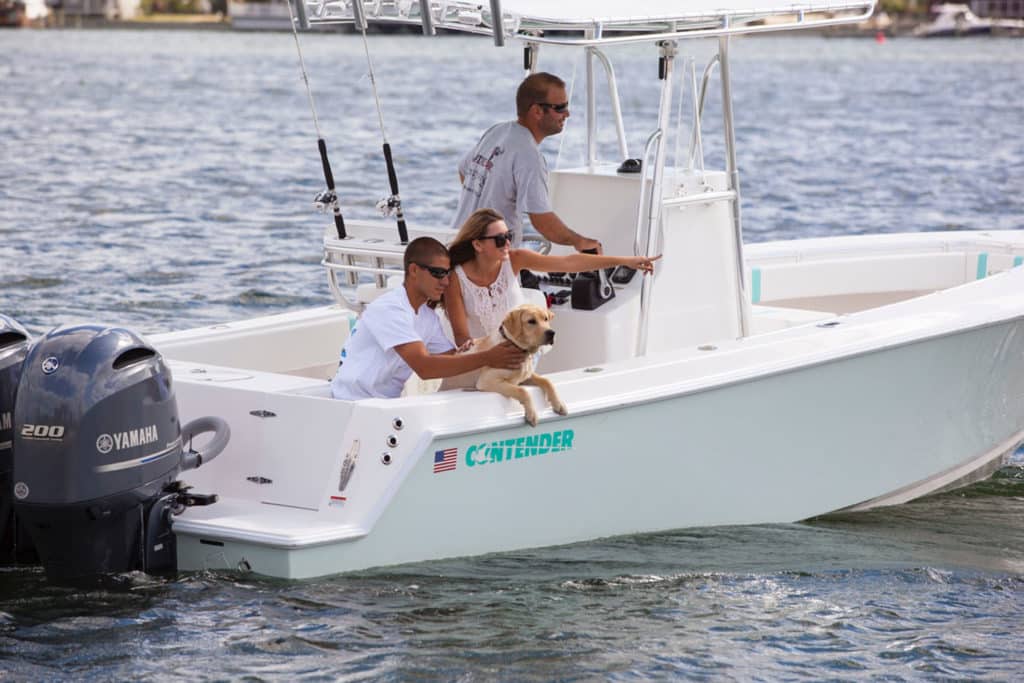
With twin Yamaha F150s, the 25 T still takes a mere 6.64 seconds to reach 30. That configuration also produces a top speed of 52.2 mph at 6,000 rpm for 1.58 mpg. The boat cruises at 26.4 mph, turning 3,500 rpm and achieving 2.47 mpg.
Feature highlights include a 50-gallon livewell aft, a 140-gallon insulated forward fish box, a 76-gallon insulated aft fish box, and a walk‑through transom door.
Contender 25 T Specifications
LOA: 25 ft. 3 in.
Beam: 8 ft. 6 in.
Transom Deadrise: 24.5 deg.
Draft: 1 ft. 6 in.
Dry Weight: 4,200 lb. (w/o engines)
Max Power: 400 hp
MSRP: $94,690 (w/ Yamaha F250)
Everglades 273cc
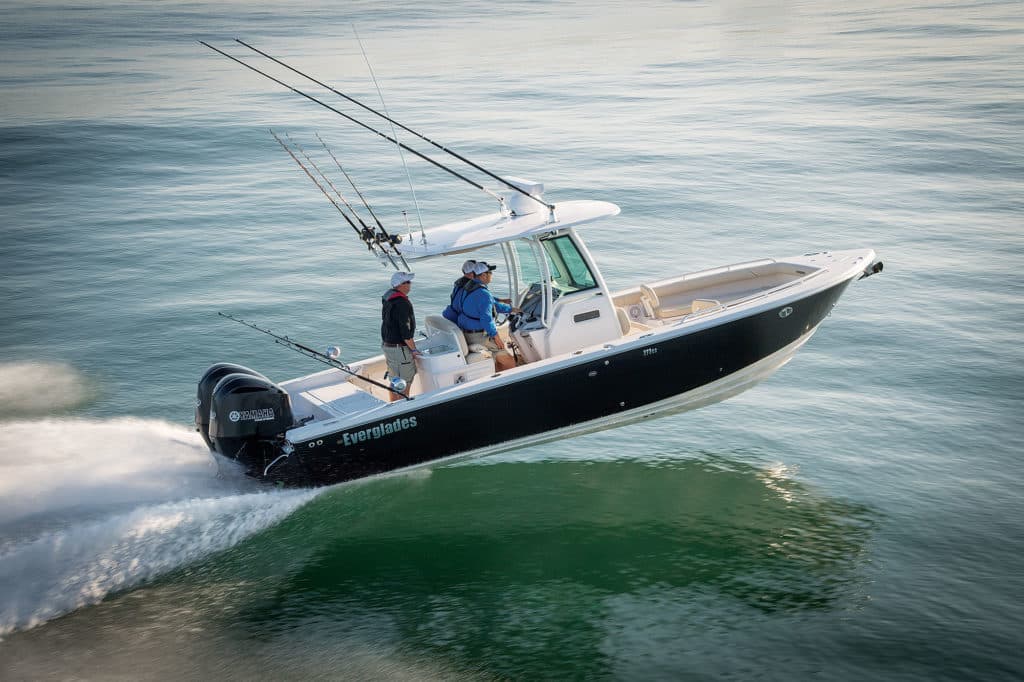
A Sport Fishing trial of this new hybrid boat in 2016 yielded a 5.7-second sprint to 30 mph with twin Yamaha F250s. “A combination of the variable-deadrise hull and the amount of horsepower aboard” makes this model jump out of the hole, says Shane Kwaterski, Everglades marketing specialist. “With more planing surface aft, she pops up and gets on plane quickly.”
The 273CC features 20 degrees of deadrise aft, which enhances that planing surface and provides more stability at rest than a sharper-angled boat, in general. Lesser deadrise, though, can mean a slightly rougher ride in big seas.
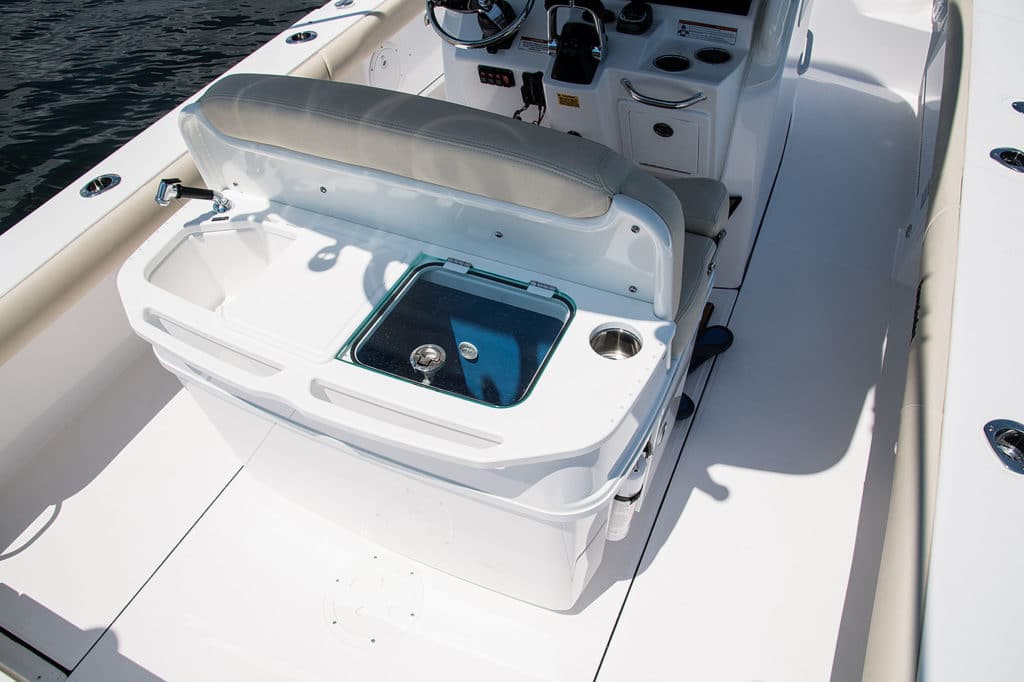
Clearly Everglades built this boat for inshore and offshore fishing. In a nod to bay anglers, Everglades lowered the gunwale height. But the boat features a proud bow with adequate flare to deflect waves, and it can be powered with twin outboards. The 18-inch draft represents a compromise between heavier offshore hulls that require 24 inches to float and bay boats that typically feature 12- to 16-inch drafts.
With the twin 250s, the 273CC hit a top speed of 54 mph at 5,800 rpm. Everglades says that substituting a single F350 outboard drops WOT speed by 7 mph and adds 2.3 seconds to the hole shot, but it also eliminates nearly 500 pounds, improving fuel efficiency.
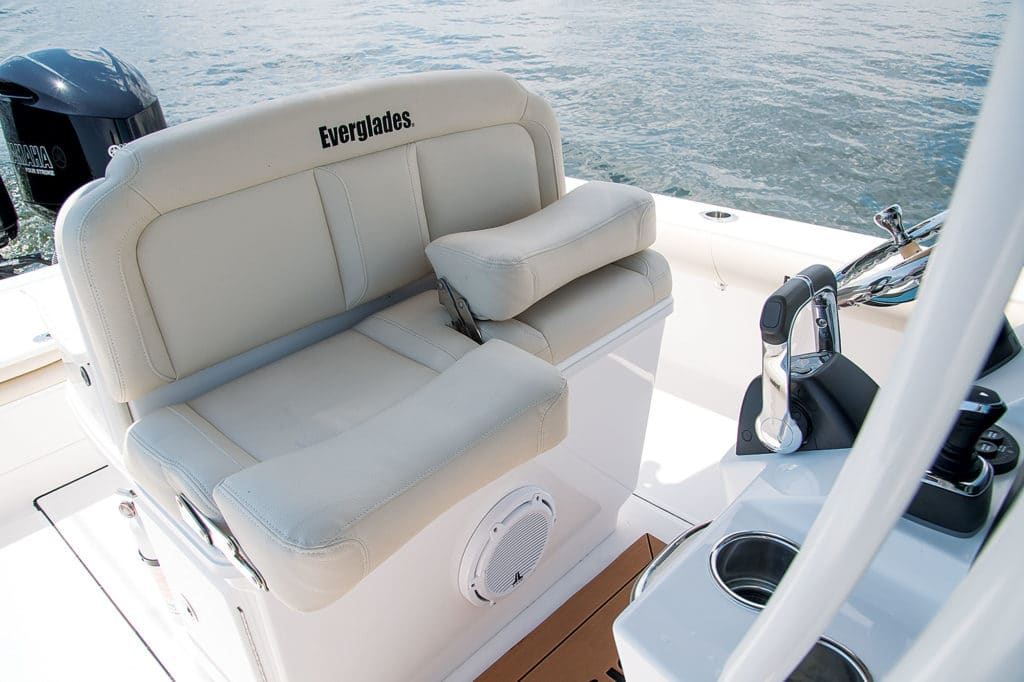
Everglades 273cc Specs
LOA: 29 ft.
Beam: 9 ft. 3 in.
Transom Deadrise: 20 deg.
Draft: 1 ft. 6 in.
Dry Weight: 7,980 lb. (w/ engines)
Max Power: 500 hp
MSRP: $208,000 (w/ twin Yamaha F250s)
Hell’s Bay Estero 24 Bay
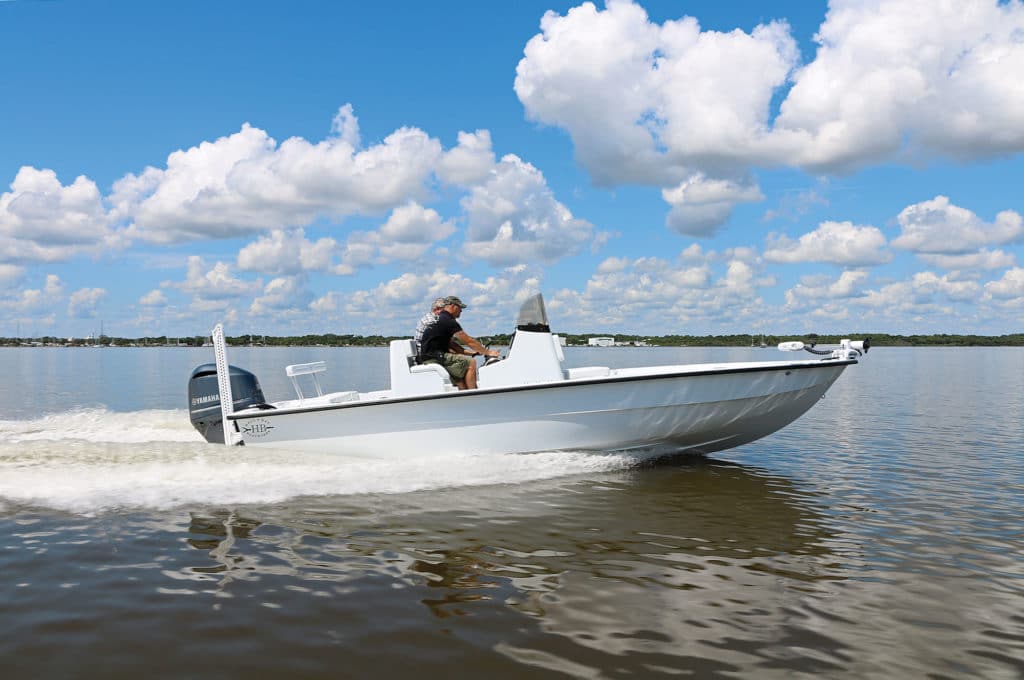
A quick hole shot relies on a lot of design aspects, says Hell’s Bay director of sales and marketing Todd Fuller. “The weight itself first and foremost, as well as the balance of the weight,” he says. “The amount of planing surface aft is important. The Estero has a pad and a pocket.”
Hell’s Bay’s new bay boat cranked out a 5.83-second zero-to-30 time with a single 300 hp four-stroke, according to Yamaha testing. “What we try to do is optimize the hole shot and the top-end speed,” Fuller says. “The hole shot is important when you have a full livewell and all the gear and four or five guys. So we try to optimize prop selection.
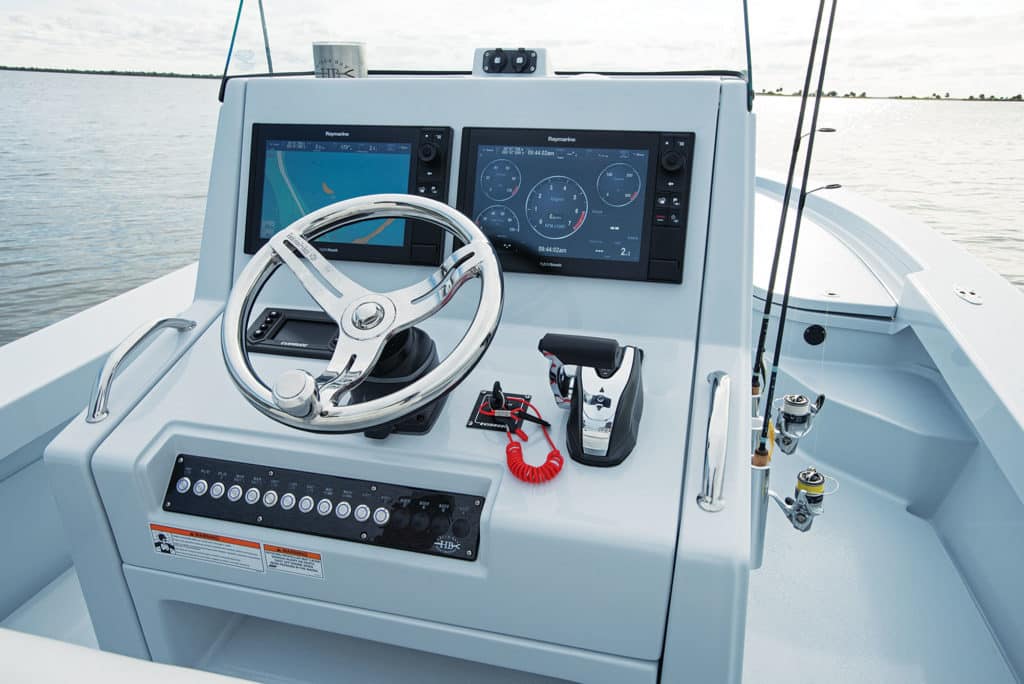
“The height of the engine is really important; it’s on the jack plate. So finding the optimum height of the engine helps you find that sweet spot for zero to 30.”
Still, variables exist, and it usually takes months of tweaking an experimental hull plug to get everything just right. “The hole shot has a lot to do with the pocket (aft): the shape, the depth, how the water comes up and meets the prop and the lower unit,” he says. “There’s a lot of black magic to it.”
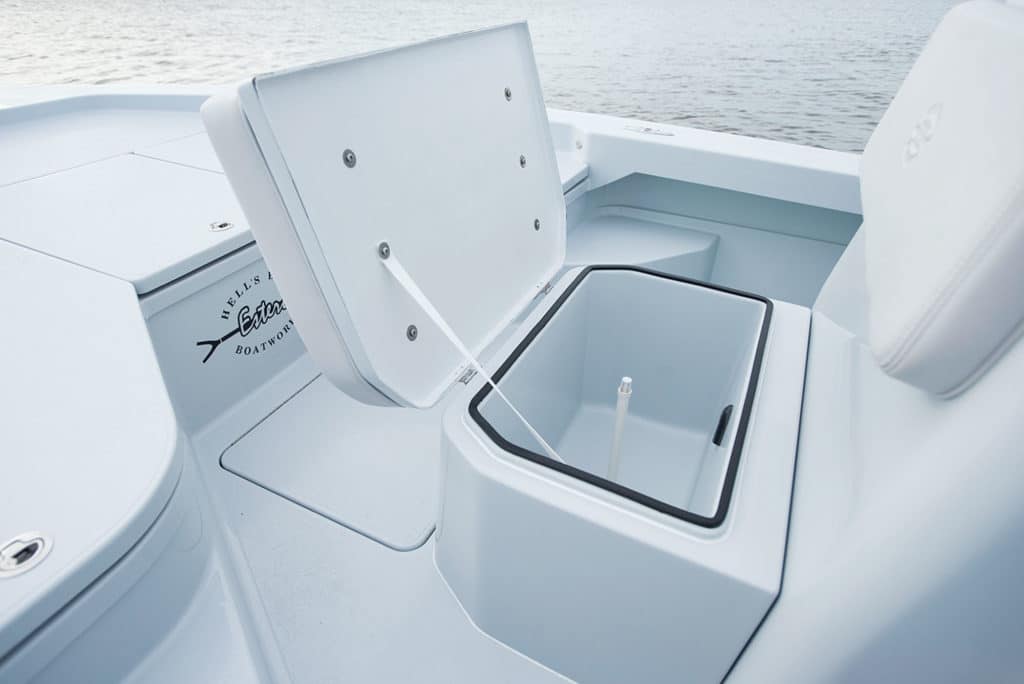
Yamaha took the Estero up to 57.4 mph at 5,900 rpm, achieving 2.24 mpg. The F300 was turning a three-blade Saltwater Series II 15‑by‑21-inch stainless-steel prop.
Hell’s Bay Estero 24 Bay Boat Specifications
LOA: 24 ft. 10 in.
Beam: 8 ft. 6 in.
Transom Deadrise: 15 deg.
Draft: 1 ft. 1 in.
Dry Weight: 3,100 lb. (w/ engine)
Max Power: 400 hp
MSRP: $110,000 (base boat w/ 300 hp outboard and trailer)
Pathfinder 2200 TE
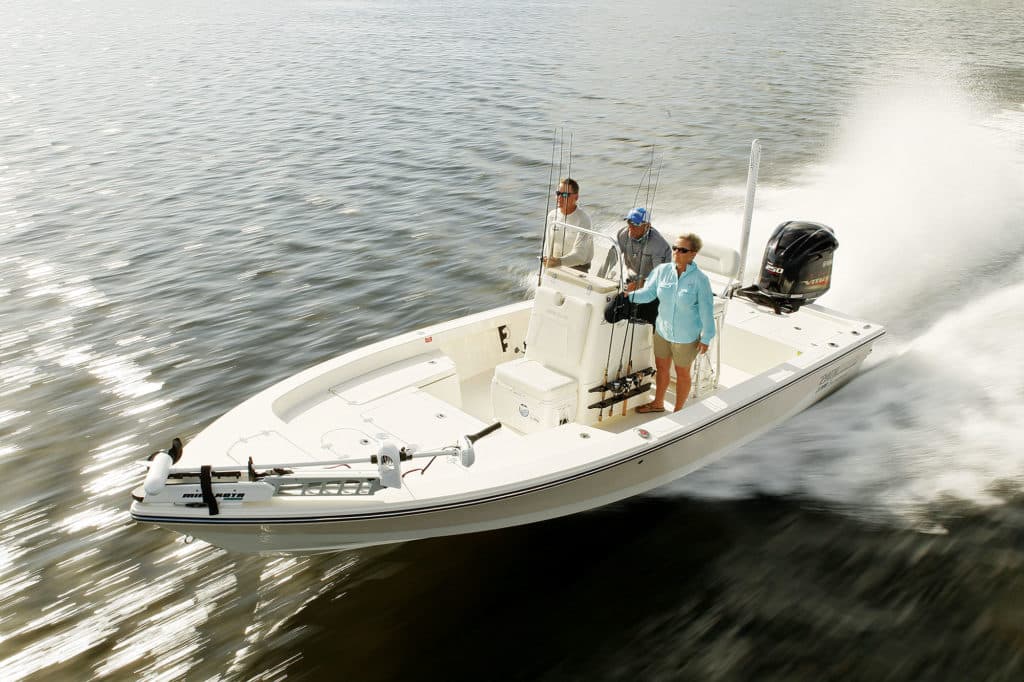
The smallest of the rocket ships we found, Pathfinder’s 2200 TE features a number of design aspects that give it a 6-second zero-to-30 time, powered by a four-stroke 250. Pathfinder’s marketing director Charlie Johnson listed those attributes:
• The boat’s ability to carry a larger outboard engine such as a Yamaha VF250 SHO that has a lot of torque to spin up a four-blade propeller.
• The standard jack plate puts the engine farther aft, which ensures cleaner water to the prop.
• The pocket in the hull allows the water to reach the prop even with the jack plate raised, so a good hole shot is still achievable in shallow water.
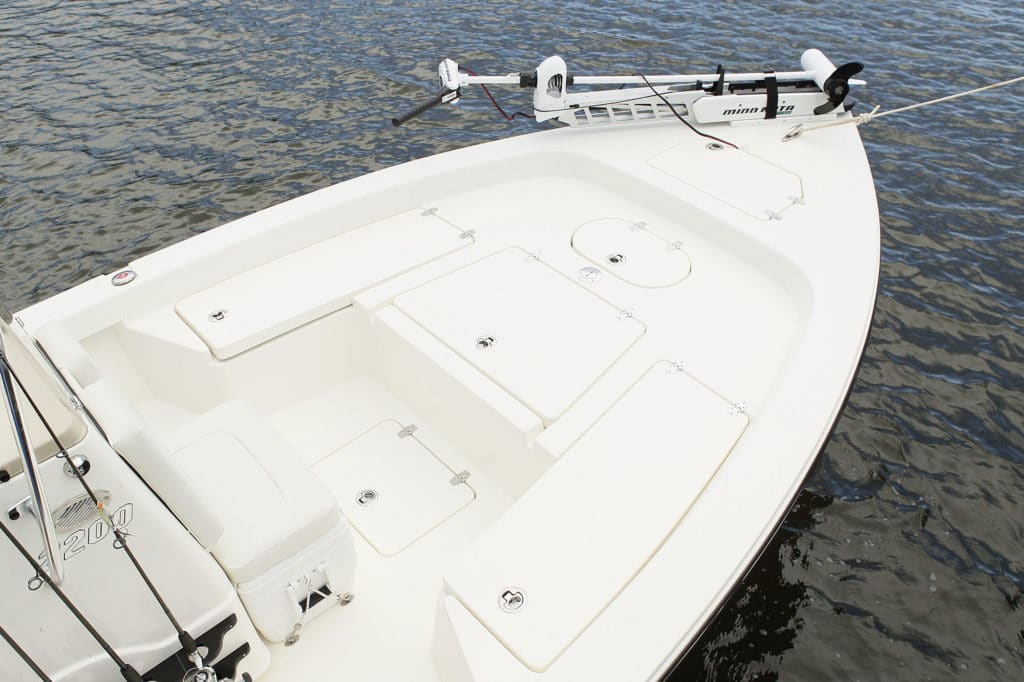
In addition, he says, balance and weight distribution are very important: A stern-heavy boat won’t jump on plane as quickly as a better-balanced hull.
Are there any trade-offs when designing a boat for the quickest hole shot? “If hole shot is the primary goal, then a four-blade prop is the best way to achieve that. The trade-off with a four-blade is that top-end speed is going to be compromised simply because the engine will not likely reach the same rpm level as with a three-blade prop,” he says.
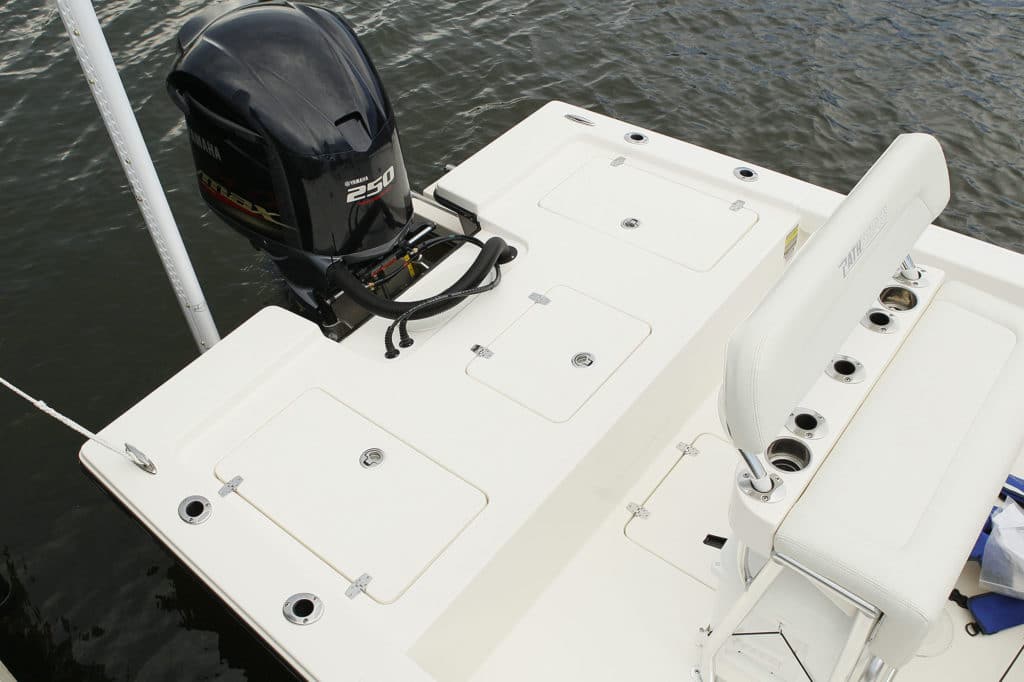
And an acceleration tip? When the boat’s loaded, keep extra gear weight out of the stern and lower the trim tabs slightly for an even quicker time to plane, he says.
Pathfinder 2200 TE Specifications
LOA: 22 ft. 2 in.
Beam: 8 ft. 6 in.
Transom Deadrise: 15 deg.
Draft: 11 in.
Dry Weight: 2,850 lb. (w/ VF250)
Max Power: 250 hp
MSRP: $55,520 (w/ Yamaha F200)
Yellowfin 24CE
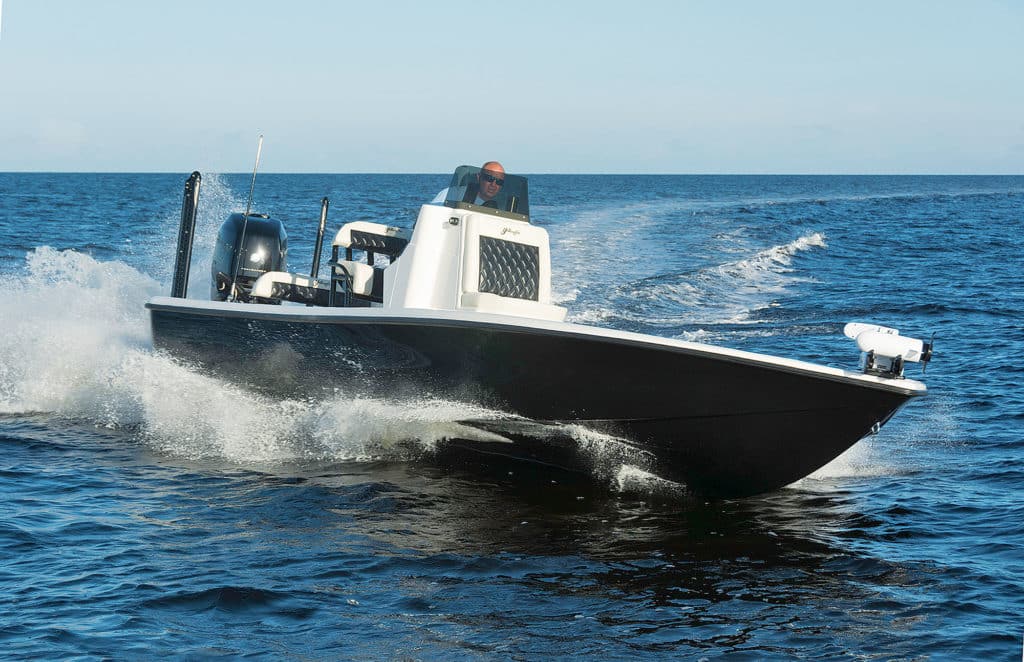
While a specific zero-to-30 time measurement for the Yellowfin 24CE proved unavailable, the company says this carbon-Kevlar-Eglass bay boat planes in under 4 seconds with a medium load and a Yamaha 300 or 350; it reaches 60 mph in less than 16 seconds.
“The 24CE has incredible draft ability,” says Heath Daughtry, Yellowfin vice president. “That allows for the hull to have access to plane in less-desirable water depths.”
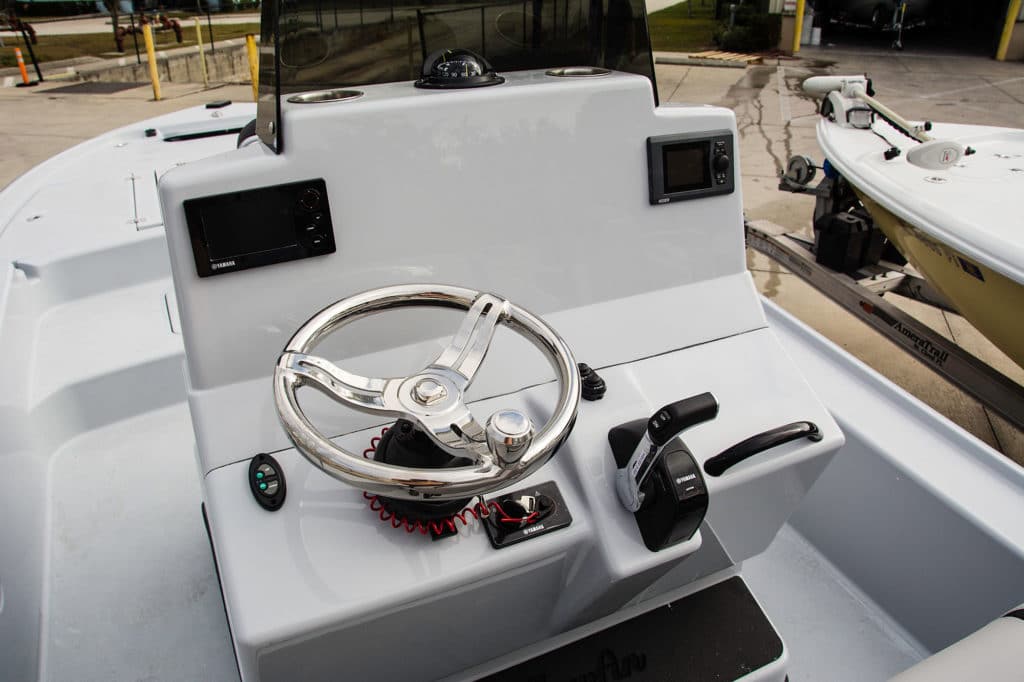
The hull design also inhibits bow rise and enhances vertical lift so the boat doesn’t squat when accelerating, Daughtry says. Other design elements that contribute to a quick hole shot include “a properly displaced hull in the water, creating a hull to run without trim tabs and to use its entire running surface as lift,” he says.
Yellowfin says this boat tops 70 mph with a Mercury 400R outboard. It weighs only 2,400 pounds and can float in 12 inches of water. Fishing features include an incredible 150 gallons of livewell capacity and a 72-gallon fish box.
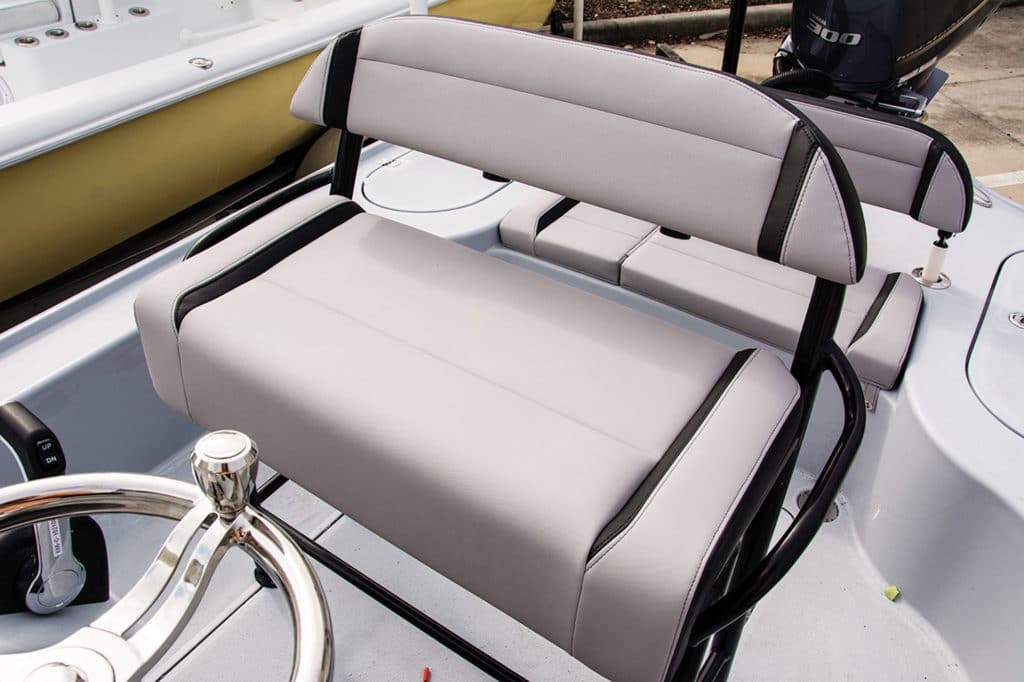
The Carbon Elite version weighs 20 percent less and is 17 percent stronger than its sister ship, the standard 24. That original version — powered by a 300 hp Verado — hit 30 mph in 6.42 seconds and reached 64.3 mph on the top end, according to Mercury tests.
Yellowfin 24CE Specifications
LOA: 24 ft. 10 in.
Beam: 8 ft. 6 in.
Transom Deadrise: 15 deg.
Draft: 1 ft.
Dry Weight: 2,400 lb. (w/o engine)
Max Power: 400 hp
MSRP: $85,536 (w/ Mercury Verado 300)

